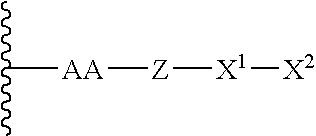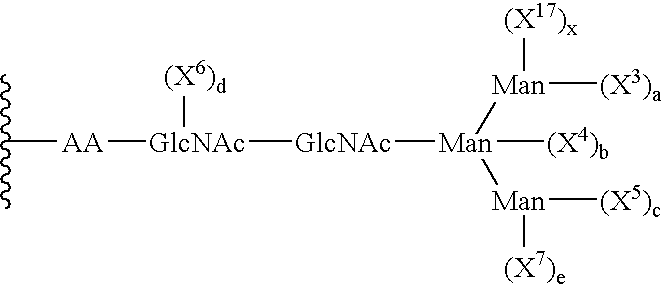Factor IX: remodeling and glycoconjugation of factor IX
a technology of factor ix and glycoconjugation, applied in the field of factor ix : remodeling and glycoconjugation of factor ix, can solve the problems of affecting the efficacy, negating any potential therapeutic benefit of peptide, and limited the use of therapeutic peptides
- Summary
- Abstract
- Description
- Claims
- Application Information
AI Technical Summary
Benefits of technology
Problems solved by technology
Method used
Image
Examples
experimental examples
[1327] The invention is now described with reference to the following Examples. These Examples are provided for the purpose of illustration only and the invention should in no way be construed as being limited to these Examples, but rather should be construed to encompass any and all variations which become evident as a result of the teaching provided herein.
[1328] The materials and methods used in the experiments presented in this Example are now described.
[1329] A. General Procedures
[1330] 1. Preparation of CMP-SA-PEG
[1331] This example sets forth the preparation of CMP-SA-PEG.
[1332] Preparation of 2-(benzyloxycarboxamido)-glycylamido-2-deoxy-D-mannopyranose. N-benzyloxycarbonyl-glycyl-N-hydroxysuccinimide ester (3.125 g, 10.2 mmol) was added to a solution containing D-mannosamine-HCl (2 g, 9.3 mmol) and triethylamine (1.42 mL, 10.2 mmol) dissolved in MeOH (10 mL) and H2O (6 mL). The reaction was stirred at room temperature for 16 hours and concentrated using rotoevaporation....
PUM
| Property | Measurement | Unit |
|---|---|---|
| retention time | aaaaa | aaaaa |
| retention time | aaaaa | aaaaa |
| retention time | aaaaa | aaaaa |
Abstract
Description
Claims
Application Information
 Login to View More
Login to View More - R&D
- Intellectual Property
- Life Sciences
- Materials
- Tech Scout
- Unparalleled Data Quality
- Higher Quality Content
- 60% Fewer Hallucinations
Browse by: Latest US Patents, China's latest patents, Technical Efficacy Thesaurus, Application Domain, Technology Topic, Popular Technical Reports.
© 2025 PatSnap. All rights reserved.Legal|Privacy policy|Modern Slavery Act Transparency Statement|Sitemap|About US| Contact US: help@patsnap.com



